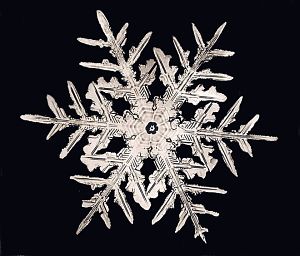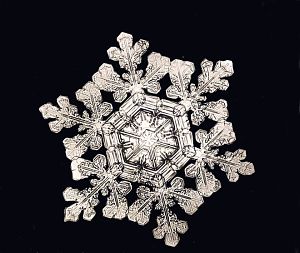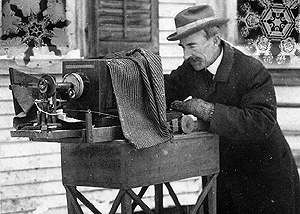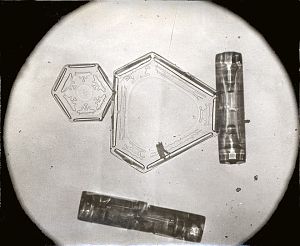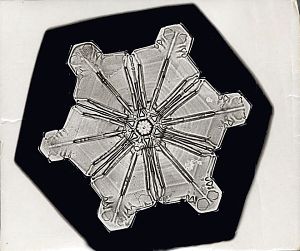This Historical Figure Wore the Label “Snowflake” With Pride
Wilson Bentley became the first person to photograph a single snowflake in 1885
Though the term “snowflake” is now considered a pejorative for Millennials and was put forward as the defining insult of 2016 by The Guardian, there’s at least one person in history who wore the label with pride. In 1885 Wilson “Snowflake” Bentley entered the history books as the first person to photograph a single snowflake. Since then, researchers have continued to capture, grow and try to understand the ephemeral crystals.
According to a website maintained by the Jericho, Vermont, Historical Society, Bentley was a farmer’s son who was educated by his mother and had a childhood fascination with the natural world. According to Stories From the Smithsonian, the precocious naturalist received a microscope for his 15th birthday. After peering through his scope at snowflakes and trying to draw the intricate details by hand, he soon decided he wanted to actually photograph the tiny crystals. Connecting his microscope to a bellows camera, “Snowflake” spent hours outdoors in the winter, waiting to catch a snowflake without breaking or melting it. He would then transfer the fragile crystal to his microscope using a feather. It took lots of trial and error, but in 1885 he perfected his technique, snapping the first image of a flake.
That set off a lifelong passion. Bentley would eventually photograph more than 5,000 snowflakes, and worked to categorize them into different shapes, which researchers now say number 35 including needle, bullet and dendritic crytals. In 1903, Bentley donated 500 photographs of snowflakes to the Smithsonian, to make sure they stayed safe for posterity. In 1931, Bentley published a book called Snow Crystals which included 2,300 of his images and his life’s research, including the idea that no two snowflakes are ever the same. He died later that year from pneumonia after walking through a blizzard near his home in Jericho.
While Bentley was motivated by the science behind snowflakes, he was also compelled to photograph them because of their beauty. In 1925, Bentley wrote:
“Under the microscope, I found that snowflakes were miracles of beauty; and it seemed a shame that this beauty should not be seen and appreciated by others. Every crystal was a masterpiece of design and no one design was ever repeated. When a snowflake melted, that design was forever lost. Just that much beauty was gone, without leaving any record behind.”
Other researchers have also been moved by both the beauty and science of snowflakes. Kenneth Libbrecht, chairman of the physics department at Caltech, for one, researches the formation of ice crystals in his spare time. He tells Margaret Werthheim at Cabinet that people assume snowflakes are just frozen drops of water. But they aren’t—they are complex water crystals following physical laws. Figuring out how various snowflakes form is actually a very difficult. “The fundamental question is how molecules hook up to form a solid lattice. At the beginning of the experiment you’ve got a vapor, and at the end you’ve got a lump of ice. What are the dynamics of this transformation? How do molecules connect to form a crystal? Things like that are the underpinnings of physics,” he says.
One of the ways he studies the crystals, explains Joseph Stromberg at Smithsonian.com, is by using a cold chamber. After seeding a piece of glass with microscopic ice crystals, which form the nuclei of the snowflakes, and placing it in the chamber, he then blows warmer humid air on the glass, which causes the snowflake to form around the ice droplet. This technique has helped him figure out the different humidity levels and temperatures that form the different snowflake structures. “I call them ‘designer snowflakes,” because you can change the conditions as you grow them and predict what they'll will look like.”
In fact, Libbrecht has published several books of snowflake photography, including a Field Guide to Snowflakes, not only because they are beautiful but to update the work Bentley did in 1930s. It’s not clear, however, whether Libbrecht, too, has ever gone by the nickname “Snowflake.”
